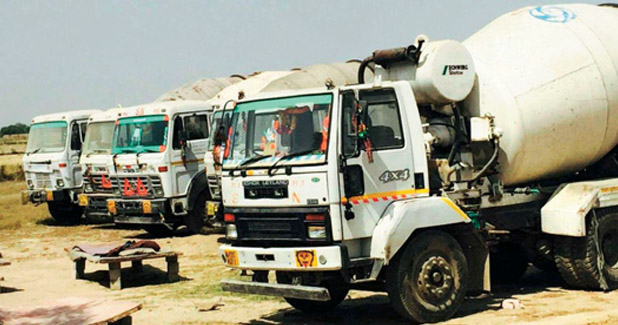
In-transit concrete mixer market
<span style="font-weight: bold;">In-transit concrete mixer sales surge in line with growing trend of mobile volumetric mixers, finds Fact.MR study.</span><p></p><p> According to a new study, revenues from the concrete mixer market were in excess of 126,800 units in 2018, and are estimated to record a 4 per cent Y-o-Y growth in 2019. Myriad factors influence dynamics of the concrete mixer industry, which range from the customer requirement for equipment with high technical standards and convenient portability, to tightened environmental standards apropos of emissions and recycling of materials. </p><p>The study opines that in-transit mixers remain the preferred category among end-users, in light of their ability to both mix and transport concrete around a construction site, particularly in case of remote locations and sites that are far from concrete plants. The deprivation of clotting and prevention of concrete balling effect are key benefits associated with in-transit concrete mixers that continue to sustain their sales. On the contrary, sales of trailer concrete mixers are expected to remain low, tugged by their higher operating and maintenance costs, along with relatively less efficient maneuverability.</p><p>A key trend complementing the sales of in-transit mixers is growing demand for mobile volumetric concrete mixers that prevent concrete waste entailed by over-ordering. The volumetric concrete mixers also enable efficient and convenient trips to batch plants, saving on hot loads and various other expenses, and cutting down time of operation. While precision continues to be the key, user-friendly control options of these equipment will continue to attract customer attention and drive sales.</p><p> Portable concrete mixers sales surge with uptake of efficient solutions for small batches</p><p>The report finds that the number of projects that calls for greater concrete volume, which is difficult to produce using paddle mixers, has witnessed a notable rise, which has created the demand for portable concrete mixers as a consequence. Portable variants continue to account for over seven in 10 units of concrete mixers sold worldwide, upheld by their ability to efficiently blend water and concrete, and consistently deliver the mixture as per requirement.Construction equipment manufacturers have been directing their efforts toward research activities in the concrete industry, in a bid to develop products that offer capabilities that are a combination of drum mixers and paddle mixers. This coupled with the focus on the development of concrete mixers with lightweight, time-effective, and self-contained characteristics has resulted in the development of high-performance portable concrete mixers, thereby favouring the market growth.</p><p> Attractiveness of APEJ for concrete mixer manufacturers remains intact The study opines that the lucrativeness of APEJ for stakeholders in the concrete mixer market is here to stay, as governments in the region continue to play a vital role as a facilitator via favourable regulations and policies. The resurgent growth in construction activities, along with growing government investments in the infrastructure development, continue to complement growth of the concrete mixer market in APEJ.The concrete mixer industry is currently witnessing the introduction of new-generation truck mixers, underpinned by the buzz phrase 'more innovation, more benefits' among leading stakeholders. While the emphasis is being placed on cost-effectiveness, ergonomics, and safety, greater customer benefits are realised in superior handling, low cleaning cost, and higher payload. These innovative products allow safe and flexible installation of attachment parts and accessories, with the requirements met in effective and convenient positioning chutes, holders, and toolboxes.</p><p></p>


 +91-22-24193000
+91-22-24193000 Subscriber@ASAPPinfoGlobal.com
Subscriber@ASAPPinfoGlobal.com